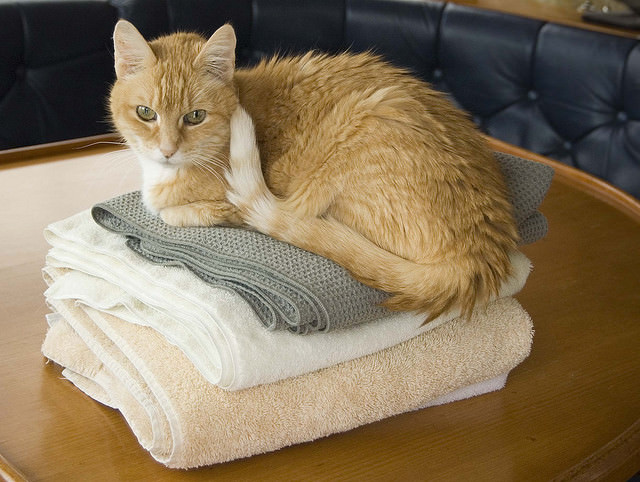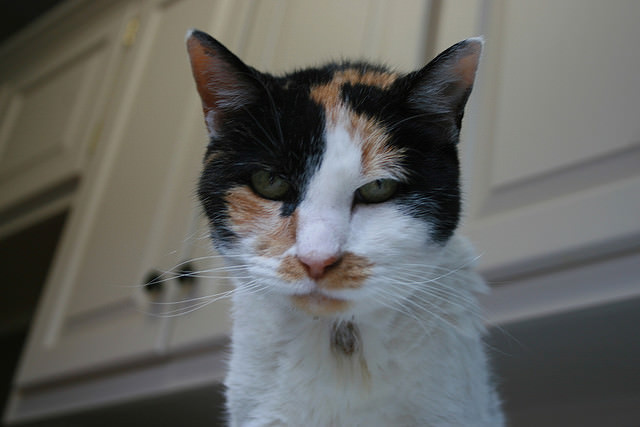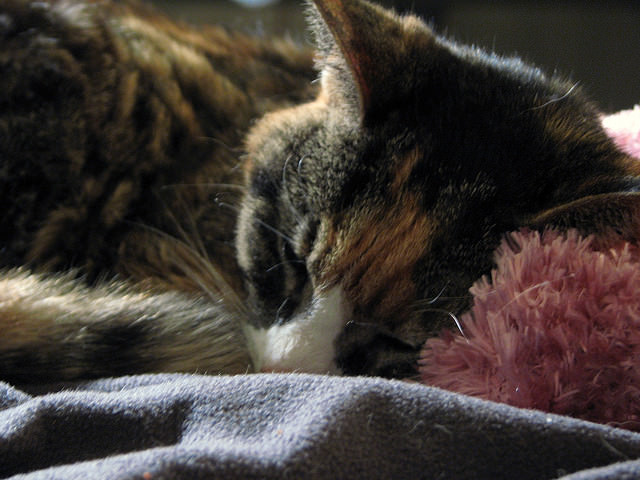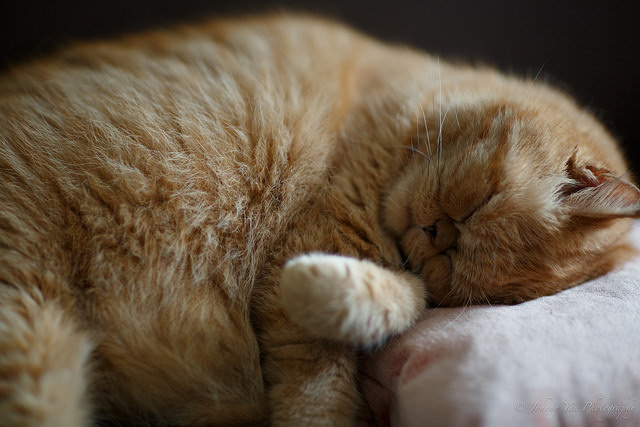Our cats are family members and their deaths come with enormous amounts of grief. There have been many recent advances in veterinary medicine that have allowed cats to receive treatments to extended their lives and improve their overall quality of life. But what happens when our cats develop untreatable terminal conditions or simply begin to decline from old age?
Not so long ago, immediate euthanization was the go-to option for a cat who was in a health decline with no chance of improving– in fact, it was the most humane choice. These days, many families are choosing to work with their veterinarians to provide hospice care for their cats. Not only can hospice care keep your cat comfortable through the end of her life, it can often help families come to terms with the impending loss and have a chance to say goodbye in the most loving and gentle way possible.

Image Source: A.Davey via Flickr.com
What is hospice care?
By definition, there is no cure for a terminal illness. Hospice care provides an alternative to immediate euthanization upon diagnosis of a terminal illness and instead gives supportive care to a cat at the end of her life. The goal of hospice care is to keep the cat pain free and it keeps a strong focus on the cat’s quality of life with compassion and dignity.

Image Source: carterse via Flickr.com
How will I know if my cat is ready for hospice care?
First, talk to your veterinarian about the severity of your cat’s condition and the expected outcome. Your decision to stop or forego treatments and begin hospice care can begin at any point after your cat has been diagnosed with a terminal illness. Each situation will be different, but you and your cat may be ready to begin hospice care if, say, you have chosen to opt out of an aggressive surgery that comes with a very low success rate or have discontinued another course of treatment that was lowering your cat’s quality of life.

Image Source: versageek via Flickr.com
What can I expect from hospice care?
Since the point of hospice care is to provide your cat with the best possible end to her life, you and your veterinarian will work together to build a plan for eliminating pain and keeping her happy and relatively healthy. The type of care your cat will require will vary greatly depending on her specific situation, but some common aspects of hospice care are:
- Help her move around. Cats who are elderly, arthritic, or have an injury may have a hard time getting around. This can be especially distressing to a cat who can’t easily access the basic necessities like food, water, the litter box, or her favorite perch. It can help to buy or build a ramp that will help her get up and down easier. Just make sure it is carpeted to allow her to dig her claws in for stability if she’s feeling wobbly.
- Administer medications. Even if you’ve stopped aggressive forms of treatments you cat may still require some medication to improve her quality of life and relieve pain.
- Help with eating and drinking. Apathy towards food is a common trait in ill cats. Since nutrition is necessary for life, you may have to get creative with meals. If your cat’s illness has caused her to lose some of her sense of smell, stinkier foods may help her get excited about dinner. Microwaving food for a few seconds before mealtime can also help make food smell stronger. Adding a bit of water to wet pate-style food may help if she is experiencing mouth pain. In some cases, feeding with a needle-less syringe may be necessary.
- Litter box help. Cats who are terminally ill may have a hard time using the litter box for several reasons. It may be located too far away if it’s painful for her to walk, the sides may be too high for her to climb into, or she may simply not have the bowel or bladder control she had before. In hospice care situations, many loving cat parents resort to puppy training pads located close to their beloved cat’s napping spot or even animal diapers.
- Accommodate for vision and/or hearing loss. Cats are famous for their impeccable senses of sight and hearing, so it can be exceptionally disorienting and stressful for your cat when those senses dim or disappear. It’ll be important to “baby proof” your home, removing anything that may cause her harm if she bumps into it. This also isn’t a good time to further disorient her by re-arranging the furniture. Instead, move her necessities closer to her usual perch and make an effort to alert her of your presence without sneaking up on her. It can help to stomp on the ground as your approach so she can sense you through the vibrations.
- Frequent visits with your veterinarian. Depending on your cat’s situation and care plan, you may need to meet with your veterinarian more regularly for testing, medication adjustments, and health evaluations. Many cities have mobile veterinarians who will do exams in your home, which can eliminate a lot of stress for a cat who isn’t feeling well.

Image Source: Johnny Yan via Flickr.com
How will I know how to do all of that stuff?
You should be working closely with your veterinarian through the hospice process. While you are flooded with the emotions of knowing your cat is at the end of her life, your veterinarian should be grounded in the logical know-how of keeping your cat comfortable. It’ll be your veterinarians job to relay that information to you and to be available to answer questions you have along the way. Expect your veterinarian to:
- Understand your needs and capabilities.
- Communicate with you clearly about your cat’s condition and prognosis.
- Help you develop a personalized plan for keeping your cat comfortable.
- Teach you how to administer medications.
- Help you determine if/when your cat’s quality of life has diminished past the effectiveness of hospice care.

Image Source: Chris Murphy via Flickr.com
How will I know when it’s time to let go?
The thing about hospice care is that it’s temporary. Since hospice care won’t start until your cat has been diagnosed with a terminal illness, the focus of the care will be on keeping her comfortable, pain free, and with a decent quality of life, rather than focusing on healing or curing. Generally, committing to hospice care will give you a bit of time to make decisions and prepare for the loss of your dear friend. Together with your veterinarian, you will look for signs that her quality of life is diminishing. Here are some important factors to pay attention to:
- Is she in pain? Is she breathing well? Is her pain being managed effectively?
- Is she eating well and receiving proper nutrition?
- Is she drinking enough to stay properly hydrated?
- How is her hygiene? If she’s not able to clean herself, are you able to do it for her?
- Is she generally happy and responsive?
- Is she mobile?
- Does she have more good days than bad?
In the end, hospice care is not about giving up. Death is a natural (if unfortunate) part of the life cycle. Hospice care is about finding ways to help our furry friends live with their terminal illnesses and doing what we can to give them as much love and care as they deserve until the very end.
